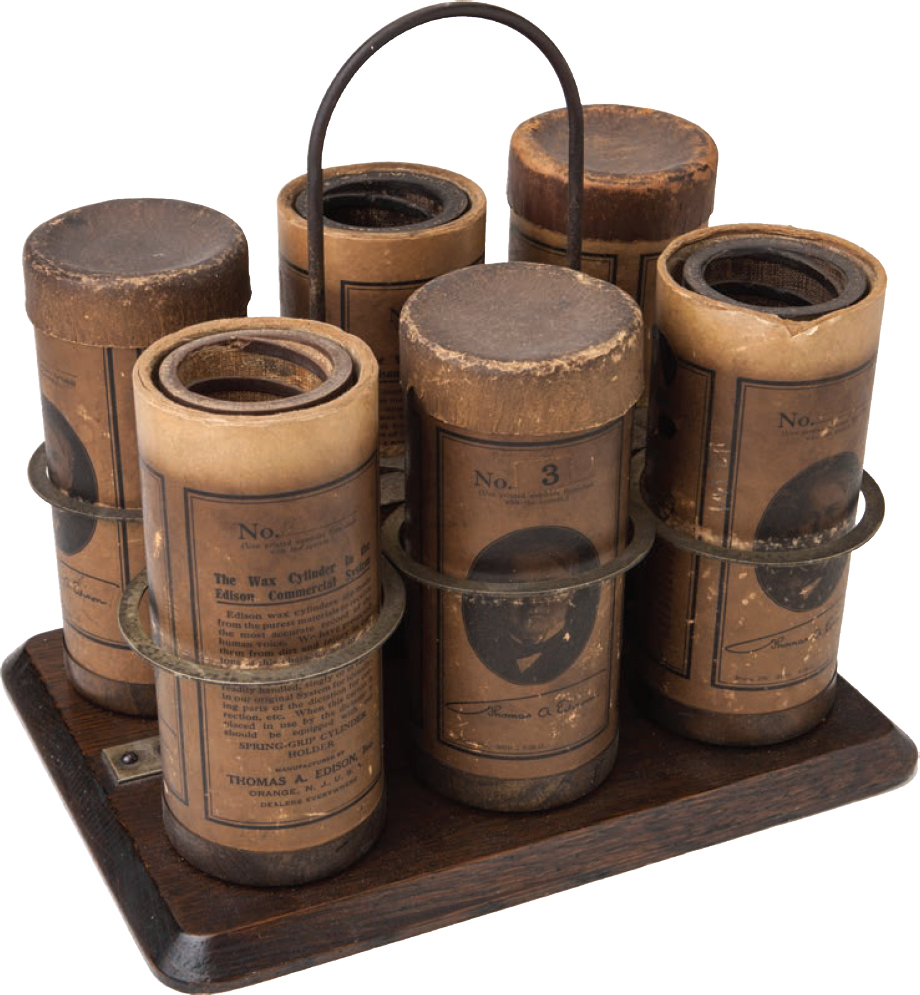
Wax cylinders were the first transportable and commercially available method of hearing recorded sound, and continued to be manufactured until 1929.
34 : Wax cylinder
1889

Wax cylinders were the first transportable and commercially available method of hearing recorded sound, and continued to be manufactured until 1929.
The young Ludwig Koch’s nascent birdwatching interest was enhanced when he was presented with an Edison phonograph and several wax cylinders. With this basic kit he was able to record the song of a caged White-rumped Shama, an Asian species. This recording still exists and is widely believed to be the first ever bird sound recording.
The wax cylinder was the first commercially available medium for recorded sound between 1888 and 1929, and it was for this format and not vinyl or shellac discs that the term ‘record’ was first coined. The medium survived quite well as it was the only method of both recording and playback, an advantage over disc systems which were for reproduction only. The music industry is sometimes said to have started with a craze for bird song recordings in the very late 19th century, and some cylinders were sold with small whistles for imitating some of the songs on the cylinders.
Dissatisfied with written notations of bird song, Koch became an ornithologist with a clear ambition to compile recordings of avian vocalisations into a ‘sound book’. He eventually achieved this in 1935, with the publication – or release in music industry terms – of Gefiederte Meistersänger, or Feathered Master Singers, featuring recordings of 25 common species chosen for their interesting vocalisations and pressed into shellac, the medium of choice for music and sound recordings until the 1950s.
Koch’s timing was a little out, and he fled from the Nazis, arriving in Britain in 1936 with very few recordings. His reputation had preceded him and he began recording the songs of British birds, abetted by Sir Julian Huxley and with helpful interest from the BBC. British ornithologist Max Nicholson had almost simultaneously been commissioned to write a book about bird song, and joined forces with Koch to release Songs of Wild Birds (1936) and More Songs of Wild Birds (1937) in quick succession, documenting the sounds of 36 British species in total over five double-sided 10” records.
Now that modern technology permits everyone to record bird song with minimal effort, most mobile phones featuring a microphone and digital recorder facility, achievements such as Koch’s are often forgotten. At the time, it was a breakthrough which shifted the landscape of amateur ornithology, and allowed the listener to enjoy – and learn – the songs of the birds around them in the comfort of their own homes.